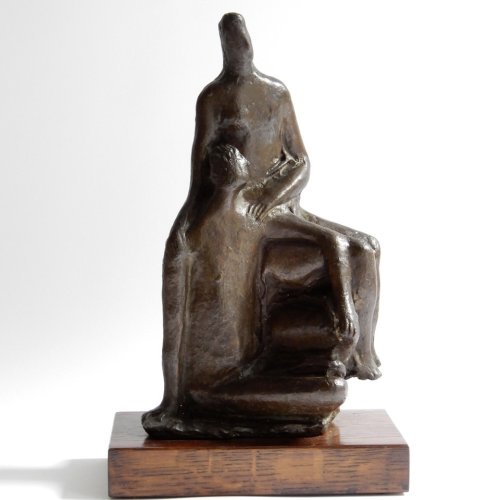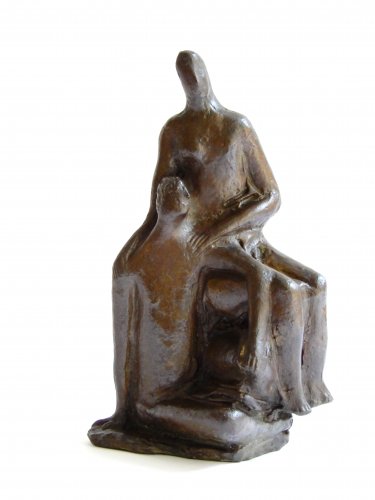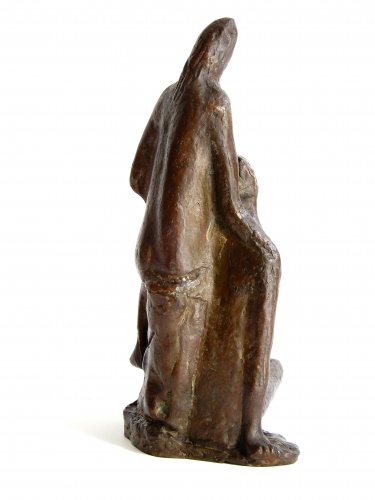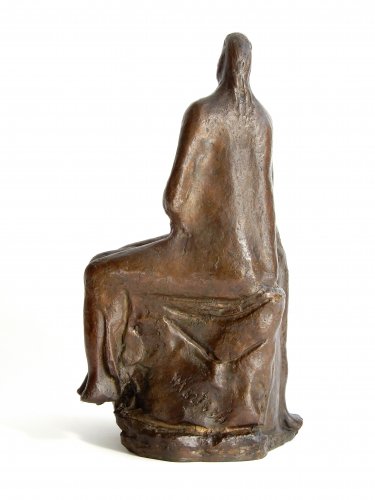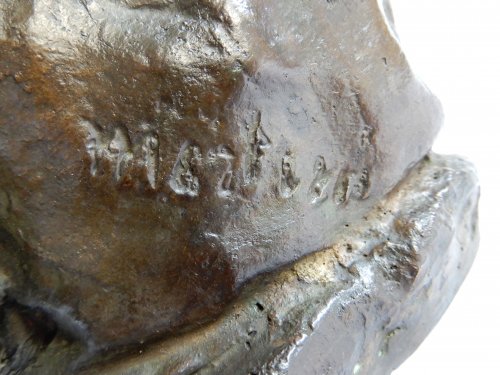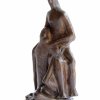Arturo Martini (1889-1947) "Bagnanti"
About this piece
Bronze sculpture of two bathers, the Italian title is 'Bagnanti' and it's made by the Italian artist Arturo Martini.
This sculpture is mainly known in ceramic. The bronze one is very rare, in the catalogue raisonné of his oeuvre, published in 1966, is a bronze example pictured.
The bronze is a cire perdue (lost wax method) and is a hollow casting.
The sculpture is signed 'Martini'.
Biography:
Arturo Martini (Treviso, 1889-1947) was originally trained as a goldsmith and ceramist. In 1905 he decided to become a sculptor as well and started to work as a pupil of Antonio Carlini. In 1908 he continued his education as a student by Urbano Nono at the Accademia di Belle Arti di Venezia in Venetië. Finally he went in 1909 to Munich as a student of Adolf von Hildebrand, where he came into contact with Expressionism. 'La puttana' was one of his first expressionist sculptures.
He exhibited his work regularly, often together with good friend and painter Gino Rossi. They exhibited also together in Paris at the Salon d'Automne in 1912.
During WOI Martini had to work in a ammunition factory where he learns to cast metal. After war he broke with the classical movements and was touched by Avant Gardism. In 1926 he became member of the movement 'Novecento Italiano'.
In 1931 he took part to 'Quadriennale di Roma' and was awarded with the big price in the section sculptures. Because of this success he received major assignments for the government like fontains and monuments. In 1937 he created the famous large relief "Giustzia Corporativa' for the Palace of Justice in Milan. A work he regrets later. It was a period in life where he struggled and developed other ideas about art and sculpture. He started to paint more and more and in 1939 he even stopped completely with sculpting. After 1941 he made a few commisioned sculptures. In 1946, same year "The Bagnanti' were created, he created his last sculpture "Bozetto per Palinuro", a monument for a partizan who died young.
Martini's art was traditional figurative, classisicism, expressionistic, modernistic and avant gardistic. His art and style influenced other big Italian artists like Marino Marini and Emile Grecco.
The artworks of Arturo Martini is very seen in Italy, but also internationally very appreciated and is being part of many museum collections worldwide.
The Kröller-Muller Museum exhibited a large sculpture, made by Arturo Martini, in their permanent collection.
Provenance:
Italian private collection, the previous owner had owned this bronze since the 1960's. He was active in the art world.
Literatuur:
"Arturo Martini, Catalogo della sculture e della ceramiche", O. Perocco. Edition Neri Pozza, Vicenza, 1966. p.46, nr. 550, pictured in bronze figure 508.
Condition
Excellent
Material:
Bronze
Measurements:
Width: 15,8 cm
(6,22")
Height: 29 cm
(11,42")
Depth: 14 cm
(5,51")
Year:
1946
Origin:
Italy
Artist / atelier:
Arturo Martini,
